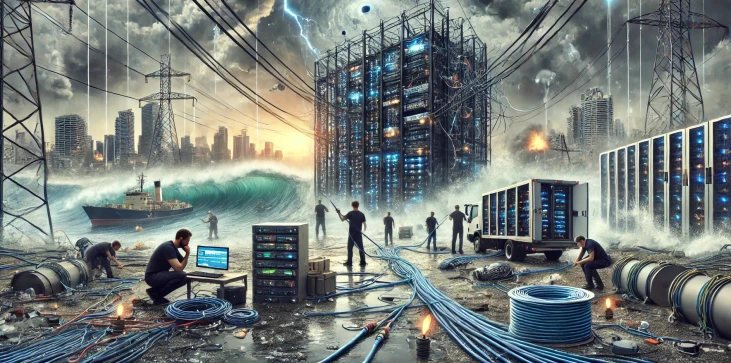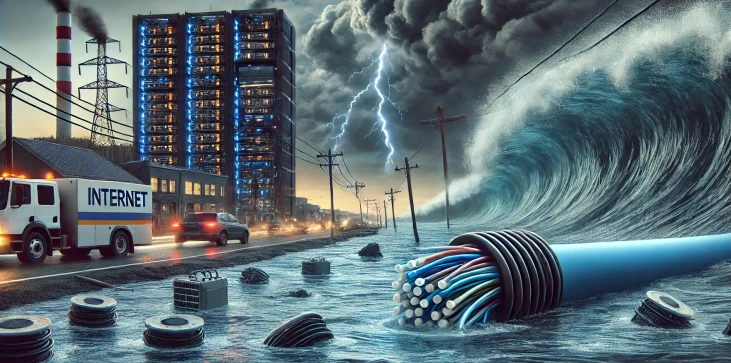
Hurricane Ashley, one of the most powerful storms of recent years, has had severe consequences not only on communities and infrastructure but also on the global internet. With modern life deeply intertwined with digital connectivity, the disruption caused by the hurricane underscores how vulnerable our online networks can be during natural disasters. The storm severely affected major data centers, undersea cables, and local internet service providers, leading to widespread outages across several countries. In this article, we will explore the consequences of Hurricane Ashley on the internet, the challenges faced by businesses and individuals, and the steps being taken to restore and protect digital services in the aftermath of the storm.
The most immediate consequence of Hurricane Ashley was the extensive internet outages. As the storm ravaged through key regions, many internet service providers (ISPs) suffered power losses and equipment damage. Large metropolitan areas saw severe service interruptions as power grids went offline, cutting off millions from essential online services, businesses, and even emergency alerts. Several affected countries reported outages lasting several days, with restoration efforts hindered by continued harsh weather conditions.
Hurricane Ashley’s impact wasn’t confined to homes and small businesses—large data centers and cloud service providers were also hit hard. Data centers in affected areas struggled to maintain operations as backup generators failed, leading to the temporary shutdown of crucial cloud services. Companies that rely heavily on these services for daily operations faced significant downtime, causing a ripple effect in productivity across the globe. Some companies reported significant financial losses as a result of these disruptions, prompting discussions around bolstering infrastructure against future natural disasters.
A less visible but equally important consequence of Hurricane Ashley was the damage sustained by undersea cables. These cables, which are vital for maintaining global internet connectivity, suffered physical breaks due to the storm’s impact on coastal regions. Repairs to these cables are notoriously difficult and time-consuming, meaning that internet speeds in certain regions are expected to remain suboptimal for an extended period. The damage to this infrastructure has brought attention to the fragility of global communication networks in the face of natural disasters.
In the aftermath of the hurricane, efforts to restore internet services have been swift but challenging. Internet service providers, in coordination with governments and international organizations, have launched massive restoration efforts. Some regions have already seen services restored, but others, particularly rural areas, continue to experience slow recovery. Additionally, there has been a growing conversation about the need to build more resilient internet infrastructure, such as the diversification of undersea cable routes and more robust data centers to withstand future hurricanes and natural disasters.
The consequences of Hurricane Ashley on the internet have revealed just how vulnerable our digital world is to natural disasters. From widespread outages to damage to critical infrastructure like undersea cables and data centers, the storm has underscored the importance of investing in stronger, more resilient systems. As restoration efforts continue, it is vital for global leaders, technology companies, and governments to prioritize the creation of a more robust and disaster-resistant internet infrastructure to minimize the impact of future storms.

The hurricane caused widespread disruptions to internet services, leading to downtime for businesses that rely heavily on digital operations. Cloud services and data centers went offline in some regions, causing delays in communication, service delivery, and e-commerce, leading to significant financial losses for companies worldwide.
Undersea cables are the backbone of global internet connectivity, facilitating the flow of data between continents. Hurricane Ashley caused physical damage to some of these cables, leading to a degradation of internet services, especially in regions heavily reliant on them. Repairs to undersea cables are difficult and can take a long time, making the restoration of normal internet speeds a lengthy process.
The hurricane highlights the need for a more resilient internet infrastructure, particularly in the face of natural disasters. Key lessons include the importance of diversifying undersea cable routes, reinforcing data centers, and creating backup systems for internet providers. These steps can help mitigate the impact of future storms and maintain global internet stability during crises.